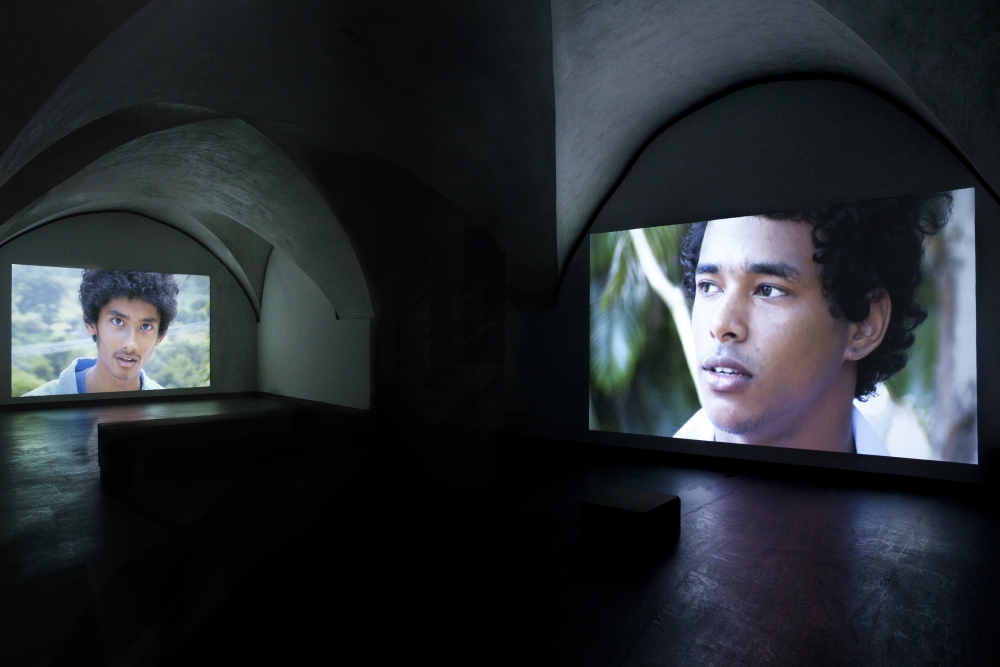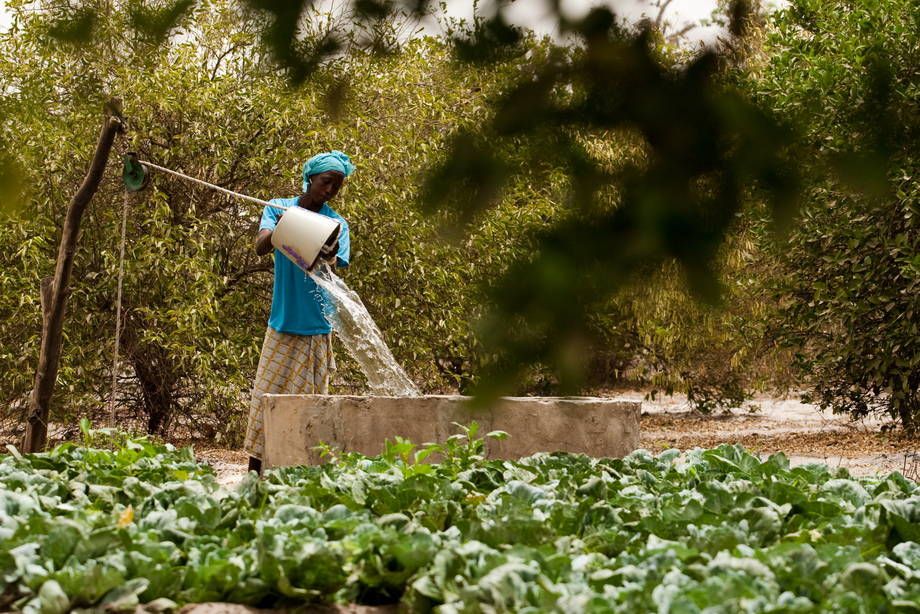Valerio Rocco Orlando is an Italian artist and filmmaker, born in 1978 in Milan. He recently had a solo show at the Korea Foundation Cultural Center in Seoul. In “The Sphere in Between”, Orlando took inspiration from the philosopher Martin Buber’s observation that when a person meets another person, they seek to communicate with each other. Then something takes place between these two which cannot be found elsewhere. The nature of both people have been changed and it is not the same after the encounter. During his solo show, Orlando kept asking the audience “나는 누구인가? – Who am I?”
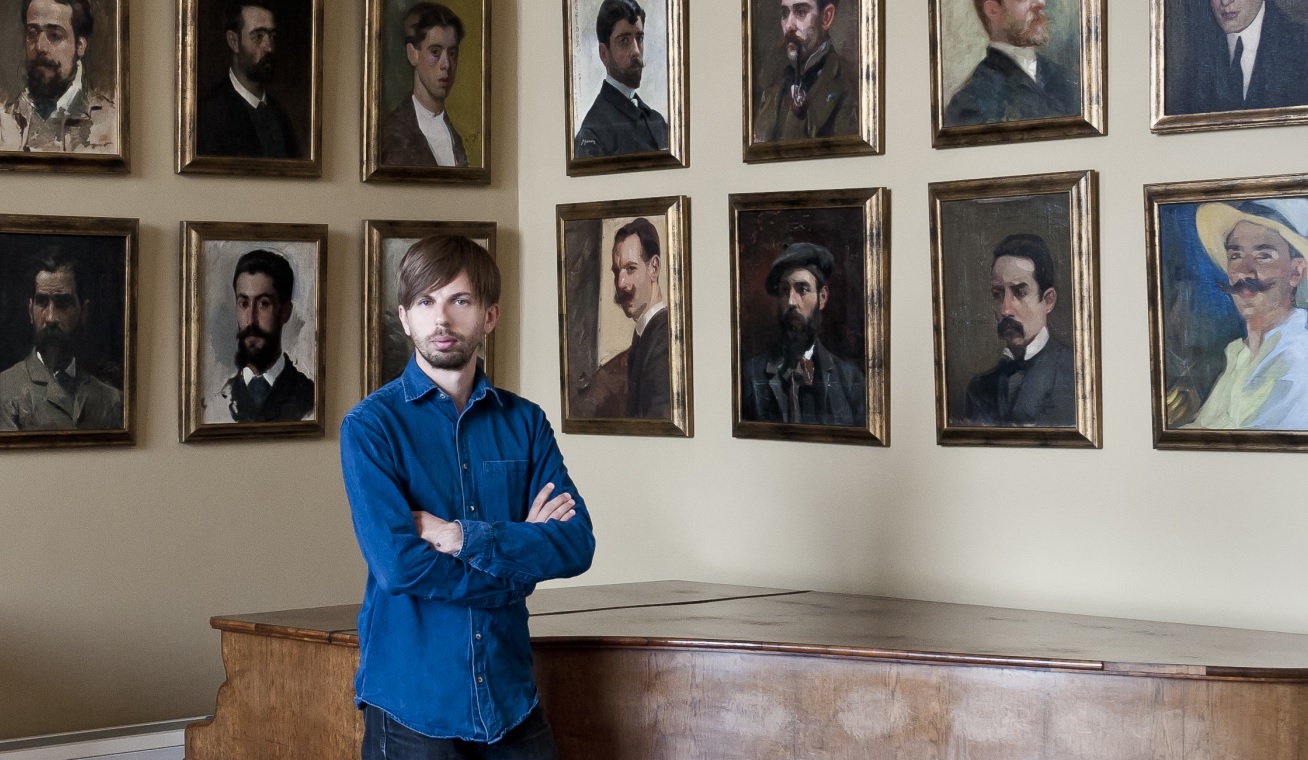 In the photo: Valerio Rocco Orlando, Self-Portrait in the Hall of Portraits at the Real Academia de España en Roma, 2012. Ph. Sebastiano Luciano
In the photo: Valerio Rocco Orlando, Self-Portrait in the Hall of Portraits at the Real Academia de España en Roma, 2012. Ph. Sebastiano Luciano
Q. When was your first visit to Korea?
A. I came to Korea in May of last year for the group show at Songeun Art Center “We have never been modern”. 2014 was the 130th anniversary of the diplomatic relationship between Italy and Korea. This is how everything started. I stayed for 10 days and visited many places which inspired me very much. I had a desire to visit Korea again. Then MMCA (National Museum of Modern and Contemporary Art) invited me for a residency program in Seoul, so I came to Korea for three months from September to December. This time I came for my solo show “The sphere of the Between” and it is already my third visit to Korea in less than one year.
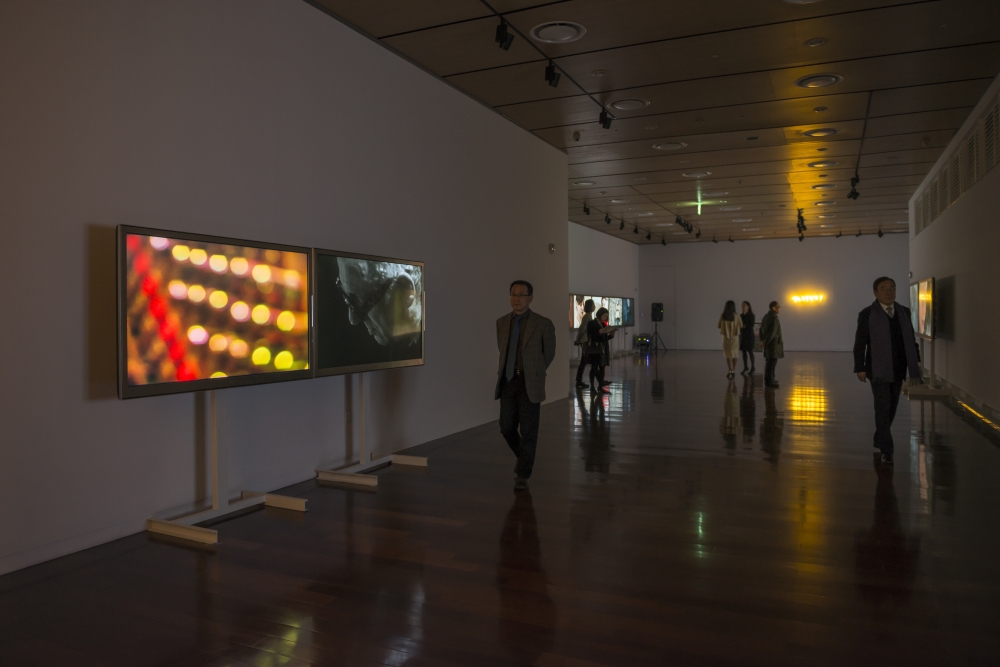 In the photo: Valerio Rocco Orlando, The Sphere of the Between, 2015. Installation view, Korea Foundation, Seoul. Ph. Junho Jang
In the photo: Valerio Rocco Orlando, The Sphere of the Between, 2015. Installation view, Korea Foundation, Seoul. Ph. Junho Jang
A. When I first came for the group show, we had a chance to look around many places in Seoul. The director of Songeun Art Center introduced us to Korean culture, taking us to a Buddhist temple on Bukhansan mountain and showing us a tea ceremony, as well as many other interesting places, so I really wanted to come back. When you travel for a show, you meet many new people and your curiosity grows, but you don’t really have chance to develop a new project. When MMCA offered me the residency program, it was such a good chance to come back, start a project and live here.
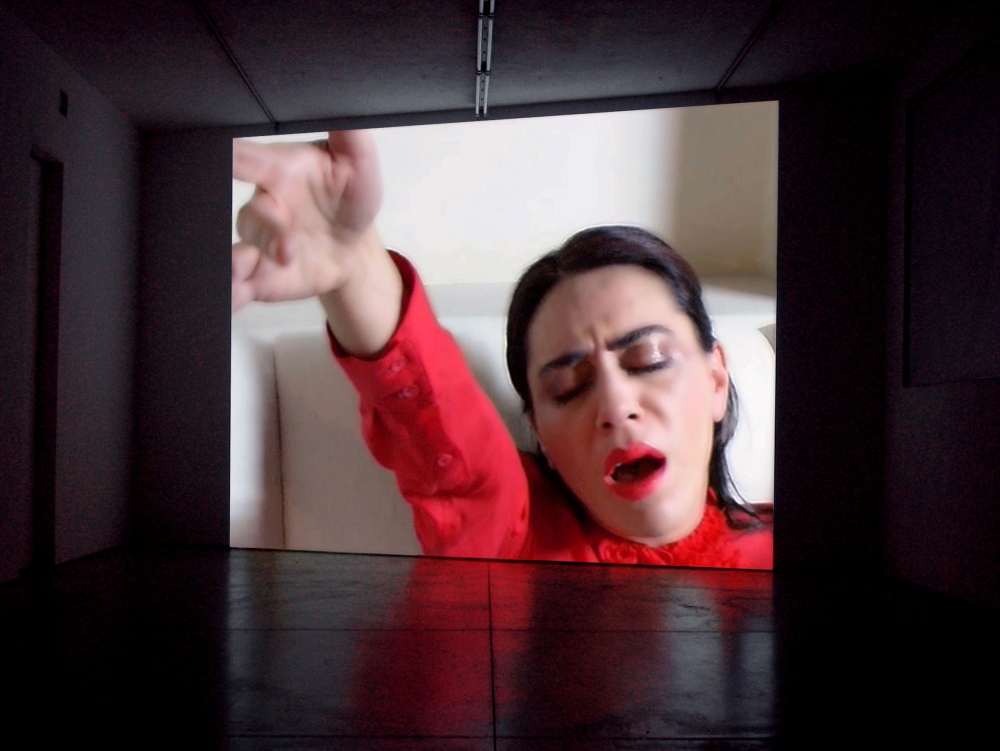 In the photo: Valerio Rocco Orlando, Amalia, 2006. Installation view, Viafarini, Milan
In the photo: Valerio Rocco Orlando, Amalia, 2006. Installation view, Viafarini, Milan
I have been traveling a lot in the past 10 years, still It was, for me, the first time living in the far east for a long period of time. It was a different experience than coming to visit. When you come as a guest, you see only nice things and it is quite superficial. Living here, it was more like living on a daily base, trying to connect with others, with strangers. At the beginning I used language a lot, because my background is theatre and drama. I am a filmmaker, so words and language are very important to me. But here, I cannot speak Korean. So I can say that I was frustrated. Three months is too short to learn a new language. Experiencing real life was difficult.
 In the photo: Valerio Rocco Orlando, The Sentimental Glance, 2007. Installation view, MAZE, Turin
In the photo: Valerio Rocco Orlando, The Sentimental Glance, 2007. Installation view, MAZE, Turin
For instance, going to the supermarket and moving from one place to another, is pretty difficult in a huge city like in Seoul. I couldn’t really connect with Korean people, because they don’t speak my language. During the residency program, I visited Hwa-Gye-Sa, the Buddhist temple nearby Changdong. Then I realized that maybe the best way to get in touch with Korean people and get closer to them would be the traditional way, such as meditation, silence, observation and contemplation more than speaking or dialogue. So I began to use the method ‘writing’. As you see here, one of my works “나는 누구인가?” – who am I?”, is the handwriting of my mentor, a Buddhist monk who was with me during meditation.
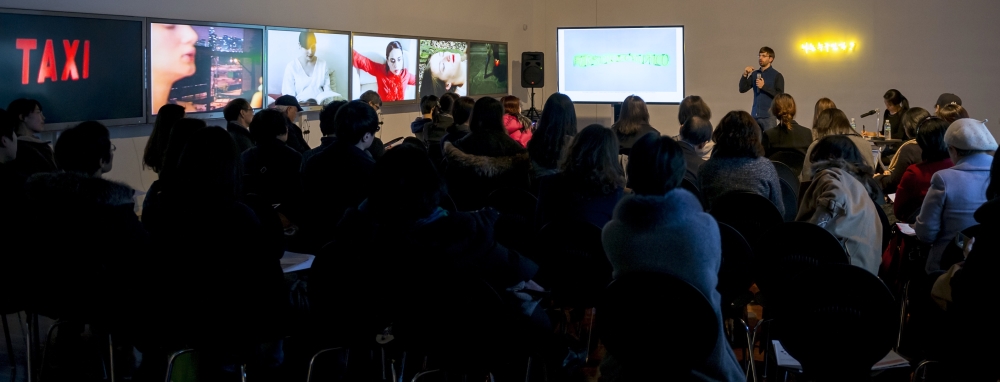 In the photo: Valerio Rocco Orlando, The Sphere of the Between, 2015. Artist’s Talk, Korea Foundation, Seoul. Ph. Junho Jang
In the photo: Valerio Rocco Orlando, The Sphere of the Between, 2015. Artist’s Talk, Korea Foundation, Seoul. Ph. Junho Jang
Q. Can you tell us more about your recent works?
A. I am interested in education in a broader sense, exchanging each other’s experiences, learning from each other, and finding a way to coexist peacefully in society. When I came for the residency, I talked to the manager expressing my desire to meet art students.
In the last 3-4 years I have been developing a long term project, called “What Education for Mars?” which is focused on the relationship between students and teachers, or students themselves. It is the idea of understanding, thinking of how to create a better school system, starting with intra-personal relationships.
I am very curious about how the young generation feels towards art
My nature and my vision is optimistic. So it happened very easily that many students came to Changdong residency where I stayed. Also other curators visited me from MMCA. I was invited to Ewha Womens University to lead a workshop and it was with these students that I wanted to create some kind of dialogue. These days, young people speak English very well, but still, they can be shy to speak in front of a camera or someone they don’t know. So I tried to make an active workshop like a writing session, more than an interview or conversation. I had a chance to meet a wide range of students, who came from three different universities, Dongduk, Ewha and Kukmin University, mostly between the ages of 20-25. I am very curious about how the young generation feels towards art. As you saw at the opening of the show, many students came and all the participants of my project, they volunteered for the project. I invited them to write on a couple of questions.
The main topic of this project is this: I can see here that many art students get frustrated if they didn’t pass an exam or didn’t get in a good university. But education or school is not the only way to become an artist.
What they expect from education?
For example, I didn’t study visual art or fine art, so I have been asking them, “what they expect from education?”. We don’t really ask that often. So I invited them to think out of the box. Without professors participating, the students and I met again and again, opened up to each other and shared very personal experiences. They wrote their answers by hand, because I knew that they learned calligraphy in school. The selection of all these answers will be edited and made into an artist book. That is my next project which is also related to this residency. I am still working on this and the book will be a special edition, like a folding screen. I would like to work with a local designer and publisher.
Another project I did when I was here was in Dec 2013. I was invited to the Art Seonjae Center to show my work “The Reverse Grand Tour”. I completed this project in 2012 which is about relationship between artist, society, and institutions – and the artist’s responsibility towards society. It’s a 15 minute HD video in 7 different languages, with Korean subtitles.
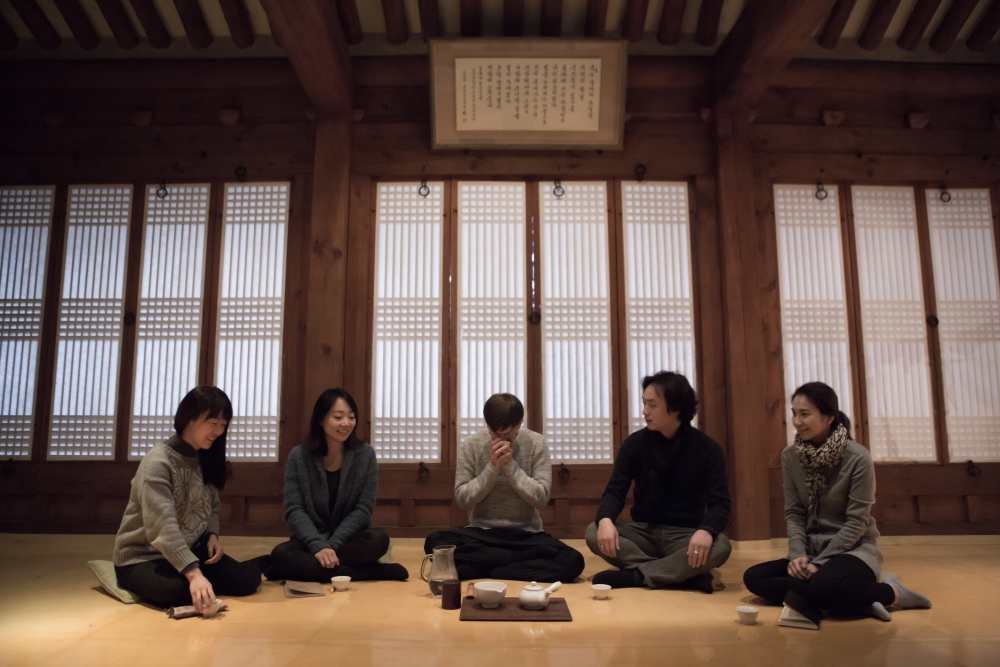 In the photo: Valerio Rocco Orlando, Darye, 2014. Performance, Art Sonje Center, Seoul. Ph. Soohoon Kang
In the photo: Valerio Rocco Orlando, Darye, 2014. Performance, Art Sonje Center, Seoul. Ph. Soohoon Kang
I also created a new piece for the show. On the left side of the Art Seonjae Center, there is a beautiful Korean traditional house. I have a deep interest in Korean tradition and how the young generation reflects on it. So I invited a bunch of artists from different specializations such as, visual art, theater, performance, music and dance. This was organized by KAMS (Korea Art Management Service), and also supported by the Italian Cultural Institute. So they stayed with me at this traditional house and had Darye – a tea ceremony together. This beautiful Hanok became my house for one day. I invited them to join me for a cup of tea and talk about artist’s responsibility towards society, and tradition. I always use the same methodology, intimate conversation. For me, it is important that a conversation must be a very intimate and personal experience, that whether it’s a one on one conversation or a group conversation. So, through the video, the audience can mirror himself or herself. It is a kind of social practice, but also very personal.
 In the photo: Valerio Rocco Orlando, Darye, 2014. Performance, Art Sonje Center, Seoul. Ph. Soohoon Kang
In the photo: Valerio Rocco Orlando, Darye, 2014. Performance, Art Sonje Center, Seoul. Ph. Soohoon Kang
Q. Most of your works are related to philosophy, would you like to introduce your show “The Sphere in Between”?
A. My main interest is philosophy. If I were younger, I would study anthropology or sociology. So I make film or documents of all these personal experiences. My main medium is encounters whether it be books or videos, performances or films. It is all about relationships, getting closer, and trying to find ways to open up. It is a process which is very psychological for the audience as well as the participants. It is a process of getting closer and understanding each other.
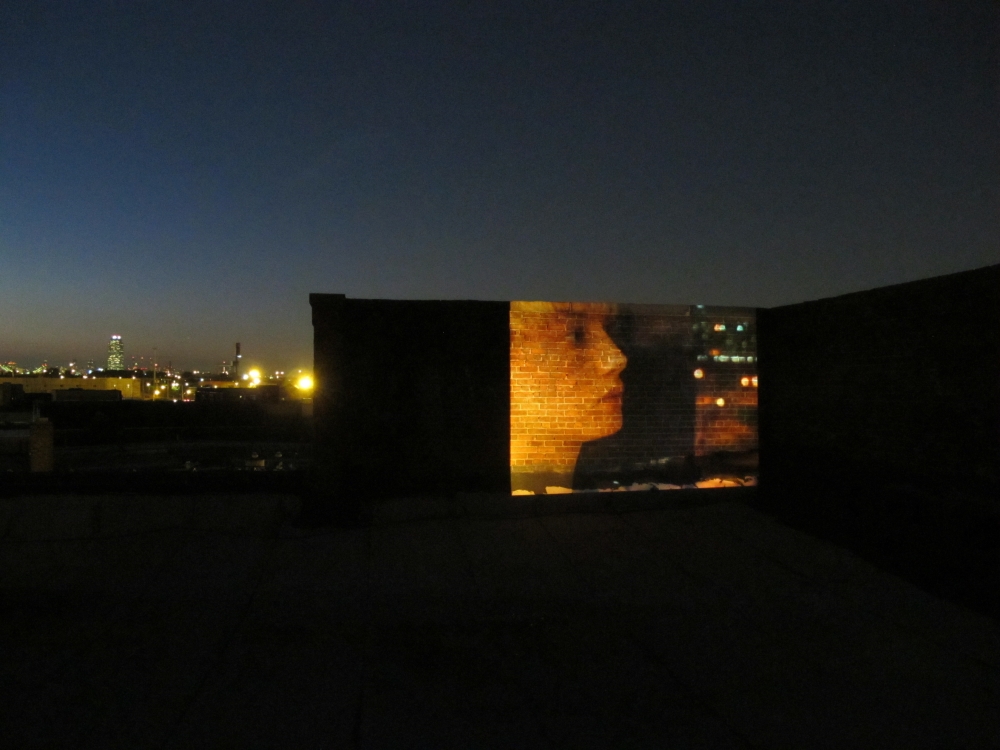 In the photo: Valerio Rocco Orlando, Eva, 2010. Installation view, ISCP, New York
In the photo: Valerio Rocco Orlando, Eva, 2010. Installation view, ISCP, New York
Q. That process, to me, sounds like a type of therapy. What do you say?
A. Do you know the maieutic (midwife) method of Socrates? Through dialogue, Socrates used to invite others to think about, and question themselves. “The Sphere in Between” is curated by Angelo Gioe’, the director of Italian Cultural Institute in Seoul, who has a deep interest in contemporary art. He is supporting artists in my generation. This show is based on Martin Buber’s, “the Sphere in Between”: Something happens between two people if they have an encounter. If they have a conversation, both people will never be the same after their encounter and this change is not superficial. I may say, it is a question of desire – a desire of opening up. If you come to this show, it may look simple, but it requires a deep engagement and understanding of yourself.
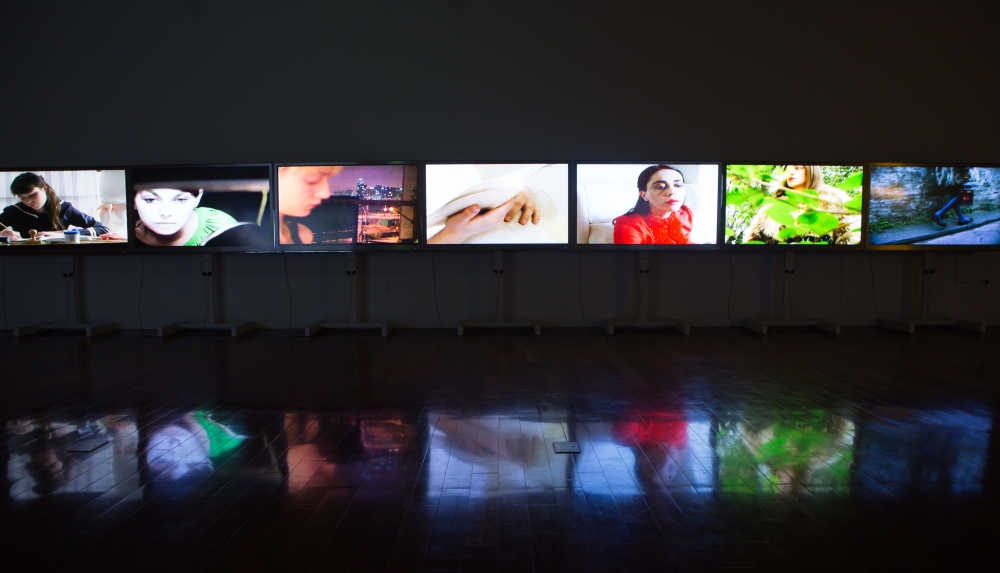 In the photo: Valerio Rocco Orlando, The Sentimental Glance, 2002-2007. Installation view, Korea Foundation, Seoul. Ph. Soohoon Kang
In the photo: Valerio Rocco Orlando, The Sentimental Glance, 2002-2007. Installation view, Korea Foundation, Seoul. Ph. Soohoon Kang
Q. What is your plan in future?
A. In my current show you can nearly see the entirety of my artistic work. One circle has been closed and I will move towards a new one. I will start a spiritual journey in collaboration with Saleh Bakri, a famous actor from Palestine. This will be a film, a collection of encounters between individuals who are deeply questioning their own relationship with God through different ranges of spirituality.


